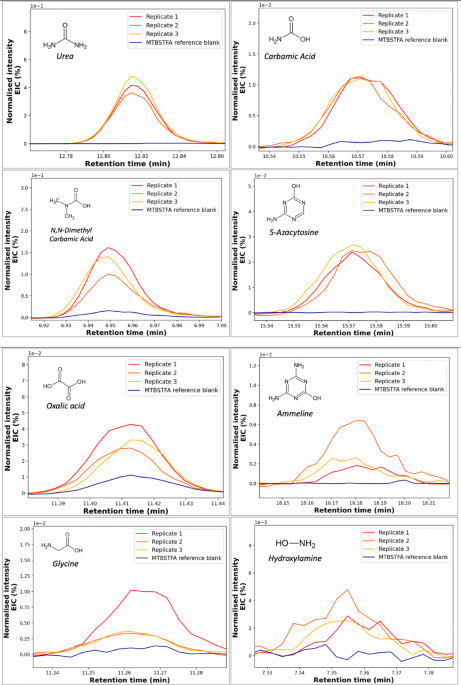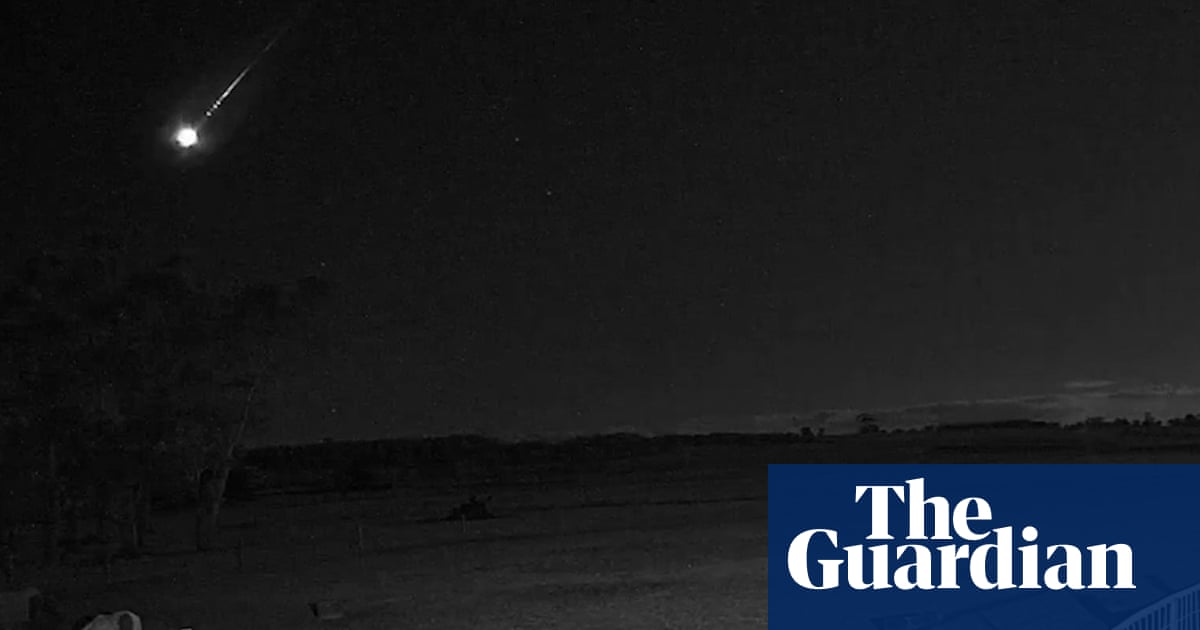Farquhar, J., Bao, H. & Thiemens, M. Atmospheric influence of earth’s earliest sulfur cycle. Science 289, 756–758 (2000).
ADS
PubMed
Google Scholar
Farquhar, J. et al. Isotopic evidence for mesoarchaean anoxia and changing atmospheric sulphur chemistry. Nature 449, 706–709 (2007).
ADS
PubMed
Google Scholar
Farquhar, J., Savarino, J., Airieau, S. & Thiemens, M. H. Observation of wavelength-sensitive mass-independent sulfur isotope effects during SO2 photolysis: implications for the early atmosphere. J. Geophys. Res. Planet. 106, 32829–32839 (2001).
ADS
Google Scholar
Catling, D. C. & Zahnle, K. J. The archean atmosphere. Sci. Adv. 6, eaax1420 (2020).
ADS
PubMed
PubMed Central
Google Scholar
Pavlov, A. A. & Kasting, J. F. Mass-independent fractionation of sulfur isotopes in archean sediments: strong evidence for an anoxic archean atmosphere. Astrobiology 2, 27–41 (2002).
ADS
PubMed
Google Scholar
Zahnle, K. J., Claire, M. W. & Catling, D. C. The loss of mass-independent fractionation in sulfur due to a paleoproterozoic collapse of atmospheric methane. Geobiology 4, 271–283 (2006).
Google Scholar
Sheldon, N. Precambrian paleosols and atmospheric CO2 levels. Precambrian Res. 147, 148–155 (2006).
ADS
Google Scholar
Driese, S. G. et al. Neoarchean paleoweathering of tonalite and metabasalt: implications for reconstructions of 2.69Ga early terrestrial ecosystems and paleoatmospheric chemistry. Precambrian Res. 189, 1–17 (2011).
ADS
Google Scholar
Zahnle, K. J., Gacesa, M. & Catling, D. C. Strange messenger: A new history of hydrogen on earth, as told by Xenon. Geochim. Cosmochim. Acta. 244, 56–85 (2019).
ADS
Google Scholar
Kurokawa, H., Foriel, J., Laneuville, M., Houser, C. & Usui, T. Subduction and atmospheric escape of earth’s seawater constrained by hydrogen isotopes. Earth Planet. Sci. Lett. 497, 149–160 (2018).
ADS
Google Scholar
Stueeken, E. E. & Buick, R. Environmental control on microbial diversification and methane production in the mesoarchean. https://doi.org/10.1016/j.precamres.2017.11.003 (2018).
Ueno, Y., Yamada, K., Yoshida, N., Maruyama, S. & Isozaki, Y. Evidence from fluid inclusions for microbial methanogenesis in the early Archaean era. Nature 440, 516–519 (2006).
ADS
PubMed
Google Scholar
KHARECHA, P., Kasting, J. & Siefert, J. A coupled atmosphere–ecosystem model of the early archean Earth. Geobiology 3, 53–76 (2005).
Google Scholar
Ozaki, K., Tajika, E., Hong, P. K., Nakagawa, Y. & Reinhard, C. T. Effects of primitive photosynthesis on earth’s early climate system. Nat. Geosci. 11, 55–59 (2018).
ADS
Google Scholar
Israël, G. et al. Complex organic matter in titan’s atmospheric aerosols from in situ pyrolysis and analysis. Nature 438, 796–799 (2005).
ADS
PubMed
Google Scholar
Arney, G. et al. The pale orange dot: the spectrum and habitability of hazy archean Earth. Astrobiology 16, 873–899 (2016).
ADS
PubMed
PubMed Central
Google Scholar
Haqq-Misra, J. D., Domagal-Goldman, S. D., Kasting, P. J. & Kasting, J. F. A revised, hazy methane greenhouse for the archean Earth. Astrobiology 8, 1127–1137 (2008).
ADS
PubMed
Google Scholar
Sagan, C. & Chyba, C. The early faint sun paradox: organic shielding of ultraviolet-labile greenhouse gases. Science 276, 1217–1221 (1997).
ADS
PubMed
Google Scholar
Zerkle, A. L., Claire, M. W., Domagal-Goldman, S. D., Farquhar, J. & Poulton, S. W. A bistable organic-rich atmosphere on the Neoarchaean Earth. Nat. Geosci. 5, 359–363 (2012).
ADS
Google Scholar
Izon, G. et al. Multiple oscillations in Neoarchaean atmospheric chemistry. Earth Planet. Sci. Lett. 431, 264–273 (2015).
ADS
Google Scholar
Thomazo, C., Nisbet, E., Grassineau, N., Peters, M. & Strauss, H. Multiple sulfur and carbon isotope composition of sediments from the Belingwe greenstone belt (Zimbabwe): A biogenic methane regulation on mass independent fractionation of sulfur during the neoarchean?? Geochim. Cosmochim. Acta. 121, 120–138 (2013).
ADS
Google Scholar
Flannery, D. et al. Spatially-resolved isotopic study of carbon trapped in ∼3.43 Ga Strelley pool formation stromatolites. Geochim Cosmochim. Acta 223, (2017).
Trainer, M. G. et al. Organic haze on Titan and the early Earth. Proc. Natl. Acad. Sci. U. S. A. 103, 18035–18042 (2006).
Fleury, B. et al. Influence of CO on Titan atmospheric reactivity. Icarus 238, 221–229 (2014).
ADS
Google Scholar
Atkinson, R. & Arey, J. Atmospheric degradation of volatile organic compounds. Chem. Rev. 103, 4605–4638 (2003).
PubMed
Google Scholar
Rudich, Y., Donahue, N. M. & Mentel, T. F. Aging of organic aerosol: bridging the gap between laboratory and field studies. Annu. Rev. Phys. Chem. 58, 321–352 (2007).
ADS
PubMed
Google Scholar
Sprengnether, M., Demerjian, K. L., Donahue, N. M. & Anderson, J. G. Product analysis of the OH oxidation of isoprene and 1,3-butadiene in the presence of NO. J. Geophys. Res. Atmos. 107, ACH 8-1-ACH 8–13 (2002).
Volkamer, R. et al. OH-initiated oxidation of benzene. Phys. Chem. Chem. Phys. 4, 1598–1610 (2002).
Google Scholar
Brassé, C., Buch, A., Coll & Raulin, F. Low-Temperature alkaline pH hydrolysis of Oxygen-Free Titan tholins: carbonates’ impact. Astrobiology 17, 8–26 (2017).
ADS
PubMed
Google Scholar
Neish, C. D., Somogyi, Á. & Smith, M. A. Titan’s primordial soup: formation of amino acids via Low-Temperature hydrolysis of Tholins. Astrobiology 10, 337–347 (2010).
ADS
PubMed
Google Scholar
Khare, B. N. et al. Amino acids derived from Titan Tholins. Icarus 68, 176–184 (1986).
ADS
PubMed
Google Scholar
Derenne, S. et al. New insights into the structure and chemistry of titan’s Tholins via 13 C and 15 N solid state nuclear magnetic resonance spectroscopy. Icarus 221, 844–853 (2012).
ADS
Google Scholar
Gautier, T. et al. Development of HPLC-Orbitrap method for identification of N-bearing molecules in complex organic material relevant to planetary environments. Icarus 275, 259–266 (2016).
ADS
Google Scholar
Morisson, M., Szopa, C., Carrasco, N., Buch, A. & Gautier, T. Titan’s organic aerosols: molecular composition and structure of laboratory analogues inferred from pyrolysis gas chromatography mass spectrometry analysis. Icarus 277, 442–454 (2016).
ADS
Google Scholar
Quirico, E. et al. New experimental constraints on the composition and structure of Tholins. Icarus 198, 218–231 (2008).
ADS
Google Scholar
Maillard, J. et al. Humid evolution of haze in the atmosphere of Super-Earths in the habitable zone. Astrobiology 23, 723–732 (2023).
ADS
PubMed
Google Scholar
Poch, O., Coll, P., Buch, A., Ramírez, S. I. & Raulin, F. Production yields of organics of Astrobiological interest from H2O–NH3 hydrolysis of titan’s Tholins. Planet. Space Sci. 61, 114–123 (2012).
ADS
Google Scholar
Jaziri, A. Y., Charnay, B., Selsis, F., Leconte, J. & Lefèvre, F. Dynamics of the great oxidation event from a 3D photochemical–climate model. Clim. Past. 18, 2421–2447 (2022).
Google Scholar
Velivetskaya, T. A., Ignatiev, A. V., Vysotskiy, S. V. & Aseeva, A. V. Ratios of sulfur isotopes (32S, 33S, 34S, and 36S) in archean rocks of karelia: evidence of microbial life and the anoxic atmosphere. Russ Geol. Geophys. 65, 689–698 (2024).
Google Scholar
Archer, C. & Vance, D. Coupled Fe and S isotope evidence for archean microbial Fe(III) and sulfate reduction. Geology 34, 153–156 (2006).
ADS
Google Scholar
Craddock, P. R. & Dauphas, N. Iron and carbon isotope evidence for microbial iron respiration throughout the archean. Earth Planet. Sci. Lett. 303, 121–132 (2011).
ADS
Google Scholar
Schopf, J. W. The fossil record of cyanobacteria. in Ecology of Cyanobacteria II: their Diversity in Space and time (ed Whitton, B. A.) 15–36 (Springer Netherlands, Dordrecht, doi:https://doi.org/10.1007/978-94-007-3855-3_2. (2012).
Google Scholar
de Bueno, C. P., Wu, D. & Tringe, S. G. Methyl-Based methanogenesis: an ecological and genomic review. Microbiol. Mol. Biol. Rev. MMBR. 87, e00024–e00022 (2013).
Google Scholar
Blaut, M. Metabolism of methanogens. Antonie Van Leeuwenhoek. 66, 187–208 (1994).
PubMed
Google Scholar
Schauder, R. & Kröger, A. Bacterial sulphur respiration. Arch. Microbiol. 159, 491–497 (1993).
Google Scholar
Ebrahiminezhad, A., Manafi, Z., Berenjian, A., Kianpour, S. & Ghasemi, Y. Iron-Reducing bacteria and iron nanostructures. J. Adv. Med. Sci. Appl. Technol. 3, 9 (2017).
Google Scholar
Bonch-Osmolovskaya, E. A., Sokolova, T. G., Kostrikina, N. A. & Zavarzin, G. A. Desulfurella acetivorans gen. Nov. And sp. Nov. —a new thermophilic sulfur-reducing Eubacterium. Arch. Microbiol. 153, 151–155 (1990).
Google Scholar
Straub, K. L. & Buchholz-Cleven, B. E. Geobacter Bremensis sp. Nov. And geobacter pelophilus sp. Nov., two dissimilatory ferric-iron-reducing bacteria. Int. J. Syst. Evol. Microbiol. 51, 1805–1808 (2001).
PubMed
Google Scholar
Veglió, F., Passariello, B., Barbaro, M., Plescia, P. & Marabini, A. M. Drum leaching tests in iron removal from quartz using oxalic and sulphuric acids. Int. J. Min. Process. 54, 183–200 (1998).
Google Scholar
Veaudor, T., Cassier-Chauvat, C. & Chauvat, F. Genomics of Urea transport and catabolism in cyanobacteria: biotechnological implications. Front. Microbiol. 10, 2052 (2019).
PubMed
PubMed Central
Google Scholar
Solomon, C., Collier, J., Berg, G. & Glibert, P. Role of Urea in microbial metabolism in aquatic systems: a biochemical and molecular review. Aquat. Microb. Ecol. 59, 67–88 (2010).
Google Scholar
Grettenberger, C. L. et al. A phylogenetically novel Cyanobacterium most closely related to Gloeobacter. ISME J. 14, 2142–2152 (2020).
PubMed
PubMed Central
Google Scholar
Lahav, N., White, D. & Chang, S. Peptide formation in the prebiotic era: thermal condensation of Glycine in fluctuating clay environments. Science 201, 67–69 (1978).
ADS
PubMed
Google Scholar
Wolf, E. T. & Toon, O. B. Fractal organic hazes provided an ultraviolet shield for early Earth. Science 328, 1266–1268 (2010).
ADS
PubMed
Google Scholar
Canfield, D. E., Rosing, M. T. & Bjerrum, C. Early anaerobic metabolisms. Philos. Trans. R Soc. B Biol. Sci. 361, 1819–1836 (2006).
Google Scholar
Szopa, C., Cernogora, G., Boufendi, L., Correia, J. J. & Coll, P. PAMPRE: A dusty plasma experiment for titan’s Tholins production and study. Planet. Space Sci. 54, 394–404 (2006).
ADS
Google Scholar








